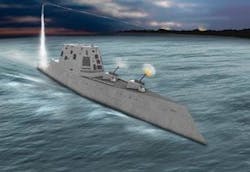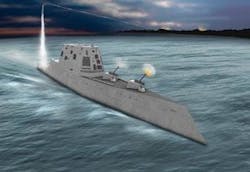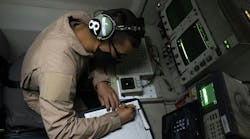By Courtney E. Howard
SAN JOSE, Calif.—Engineers at Raytheon Integrated Defense Systems in Tewksbury, Mass., have built the next-generation combat system on the LynxOS real-time operating system (RTOS) from LynuxWorks Inc. in San Jose, Calif.
The Shipboard Self-Defense System (SSDS) is for future Navy ships like the DD(X) destroyer. The system connects shipboard defense sensors and weapon systems on a fiber-optic local-area network. “Inputs from different sensors form a composite track for target tracking and quick-reaction capability,” says a LynuxWorks representative.
The SSDS, combining commercial off-the-shelf (COTS) hardware with LynxOS, delivers radar systems with hardkill (missile systems and rapid-fire gun systems) and softkill (decoys) anti-air weapons.
SSDS links and automates stand-alone sensor and engagement systems for aircraft carriers and amphibious warfare ships. The mission-critical military system furthers the goals of not only full-dimensional ship protection, but also Navy open-architecture compliance.
The Navy Open Architecture (OA) initiative requires that all U.S. Navy systems use an open-standards operating system, such as the LynxOS RTOS, to ensure future system interoperability and to support software reuse. The Navy OA is a systems design approach to using open specifications for interfaces, services, and supporting formats that ensures the compatibility and interoperability of systems and components across military platforms.
The LynuxWorks LynxOS is a POSIX-conformant RTOS that is Linux ABI-compatible and that has been certified as Navy Open Architecture Computing Environment (OACE) Category 3 compliant, says a company representative.
“The Navy’s Open Architecture program and SSDS represent the importance of COTS embedded technologies to the defense forces of the future,” says Gurjot Singh, president and chief executive officer of LynuxWorks. “Open standards have become de rigueur. By continuing to innovate with companies such as Raytheon on SSDS and other projects, LynuxWorks will continue to bring to market innovative solutions that will help protect and defend the fleet.”
Prior to the SSDS, radars and anti-air self-defense weapons on amphibious warships and aircraft carriers were stand-alone systems. Raytheon’s open-architecture SSDS integrates data from various sensors to identify and prioritize threats, provide a comprehensive picture of the threat situation, and potentially bring about faster assessments and tactical decisions. To date, Raytheon’s SSDS is employed on three classes of Navy ships. For more information, visit www.lynuxworks.com




